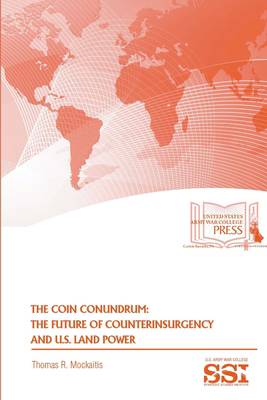
- Afhalen na 1 uur in een winkel met voorraad
- Gratis thuislevering in België vanaf € 30
- Ruim aanbod met 7 miljoen producten
- Afhalen na 1 uur in een winkel met voorraad
- Gratis thuislevering in België vanaf € 30
- Ruim aanbod met 7 miljoen producten
Zoeken
The Coin Conundrum
The Future of Counterinsurgency And U.S. Land Power
Thomas R Mockaitis
Paperback | Engels
€ 23,45
+ 46 punten
Uitvoering
Omschrijving
Counterinsurgency (COIN) has once again become the subject of contentious debate within the U.S. Army. Its supporters insist that the new approach enshrined in the U.S. Army/Marine Corps Field Manual (FM) 3-24, Counterinsurgency, led coalition forces to turn the tide of the campaign in Iraq. Critics argue that the surge and the end of the Shia uprising, not COIN, led to the dramatic decline in violence from 2006-2009. The failure of the new approach in Afghanistan, they claim, supports their argument that expeditionary COIN does not work. How this debate gets resolved could have significant implications for U.S. Army force structure in a time of shrinking defense budgets. The author, Dr. Thomas R. Mockaitis, considers what role, if any, COIN should play in the Army of the future. He examines the U.S. military's historical experience with intrastate conflict as background for understanding the wars in Afghanistan and Iraq. He then reviews the current debate over COIN..
Specificaties
Betrokkenen
- Auteur(s):
- Uitgeverij:
Inhoud
- Aantal bladzijden:
- 94
- Taal:
- Engels
Eigenschappen
- Productcode (EAN):
- 9781387581054
- Verschijningsdatum:
- 8/02/2018
- Uitvoering:
- Paperback
- Formaat:
- Trade paperback (VS)
- Afmetingen:
- 152 mm x 229 mm
- Gewicht:
- 149 g

Alleen bij Standaard Boekhandel
+ 46 punten op je klantenkaart van Standaard Boekhandel
Beoordelingen
We publiceren alleen reviews die voldoen aan de voorwaarden voor reviews. Bekijk onze voorwaarden voor reviews.











